Cruel and Fierce Inhumanity, Colombian History Pt. 2
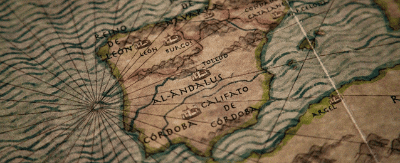
Justin Hauver
This is the second part of a series on Colombian history written to help me make sense of the country’s past. Education research (all research?) depends on an awareness of context, including historical context. Besides, I was curious and I like reading about history.
Tucked into the Upper Magdalena River Valley there is a little town called Timaná. It is home to a bold statue of an indigenous woman running with one hand holding an axe low and close to her waist as the other defiantly shoots into the sky to display the severed head of a Spanish nobleman. The artist has managed to capture the woman’s fluid bodily motion that surges up to her face crying out for liberation. La Gaitana is remembered as a hero and she also has a monument in the regional capital, Neive, that is a bit more abstract and less viscerally evocative.
After the Spanish tortured and killed her son for a delayed tribute payment, La Gaitana rallied local chiefs to seek revenge and assert independence. In 1539, she found the Spaniard in charge, gouged out his eyes, threaded a cord through his cheeks, dragged him around town, and then cut his throat. It was a short lived moment of the radical resistance that echoes across the Americas up to the present day.
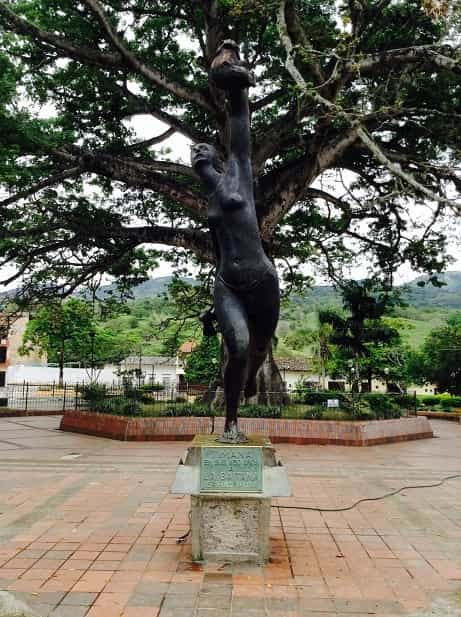
La Conquista
It’s an old story and most know the general outline. Conquistadors, driven by a lust for riches and bolstered by an implacable sense of superiority, arrived and then brutally conquered much of what we now call Latin America. In some regions, such as along the Caribbean Coast, 95% or more of the indigenous population was murdered, worked to death, or fell to plagues. After a few generations, the overall number of native people had fallen by 90 percent (Bushnell). A quick historical gloss or a handful of statistics, however, can hide the gruesome and scarcely comprehensible reality on the ground. A firsthand account by Bartolomé de las Casas opens a crack to that lived experience:
And first I wish to say that in this kingdom... such vast and profound cruelty has been committed that if I did not know it be unmistakably true, I would never believe that a Christian heart could conceive of such cruel and fierce inhumanity. There is no torment or cruel treatment that has not been inflicted onto these sad and miserable natives by those who pride themselves on being your Highness´s faithful subjects. They have burnt some natives alive, and cut off hands, nose and tong and other members of others, with great cruelty. Many others they have hanged both men and women. They have thrown natives to the dogs, cut off breasts of women and committed cruelties such that the very thought of these acts would make anyone who is a little bit Christian tremble. (Bushnell, pages 45-46)
Those are the scenes of savagery that frame one of the main conquest of the lands now known as Colombia. Around 1536, a lawyer named Gonzalo Jiménez de Quesada set out from the coastal town of Santa Marta with 1100 men, followed the Magdalena River, and defeated the Musica confederations that ruled over around one million people. Spanish victory was predicated on superior weapons and alliances with disaffected native groups. Quesada founded Santa Fé (Bogotá) in 1538 and named the Spanish territory Nueva Granada, after his birthplace (Bushnell). After a life of suppressing indigenous resistance, which included a disastrous and expensive expedition to conquer the eastern llanos, Quesada died in obscurity around 1575, afflicted with leprosy and deeply in debt. Other conquistadors with similarly gruesome stories helped consolidate the empire’s rule:
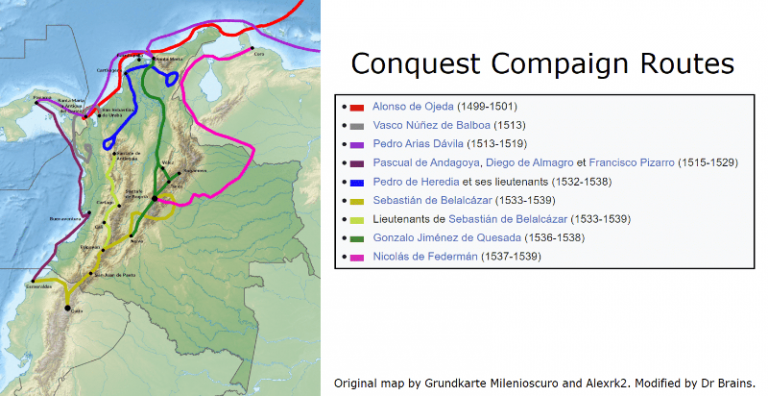
As de las Casas’s words show, psychological terror was consciously used alongside military power to mercilessly assert Spanish rule. Some indigenous groups, for example, believed that sex out in the open and during daylight hours was natural and necessary to ensure a baby’s good health. Friars suppressed this practice by using dogs to publicly rip apart the accused. Likewise, in a wave of destruction meant to repress traditional cultures, the Spanish burnt sanctuaries, sacred objects, and even homes. Only gold and other materials deemed valuable were spared, often to be carried off across the Atlantic.
Settlement
Spain’s genocidal campaigns destroyed lives and bent history to the systems of exploitation that still mar the global world order. Even the new colonial apparatus, however, had to organize itself around the old geographies defined by mountains, oceans, rivers, and large indigenous populations living around fertile savannas. As a result, the Captain-Generalcy (later Viceroyalty) of Nueva Granada was patterned on old divisions. Five regions emerge that largely align with Colombia’s main biomes, which had also delineated, to varying degrees, indigenous cultures and language families.
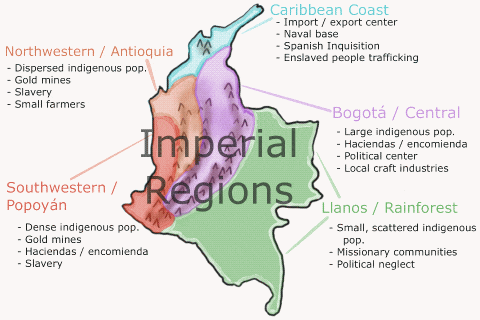
Central / Bogotá
Between the central and eastern cordilleras, where the native populations had been the most dense, Spain set up its headquarters. At first glance, Bogotá might seem like an impractical capital city. Set far from the coast, before the era of modern technology it was nearly impossible to reach over land and even by river it could take many days of hard rowing against the current to reach. But the area was fertile and home to the largest population of indigenous peoples. It was the most straightforwardly exploitable.
Spanish conquerors set up large haciendas, powered by the encomienda system that forced indigenous people to farm their traditional lands in order to enrich usurpers. As the capital city, Bogotá also drew a relatively large class well-off politicians and less well-off artisans to meet their needs. Geographical difficulties made long distance trade prohibitively expensive so local textiles and other materials were used to supply a small crafts industry. In this way, Bogotá grew into a center of power, though it was long considered a backwater town by many in the empire.
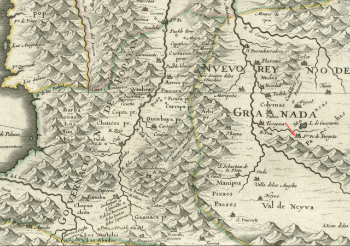
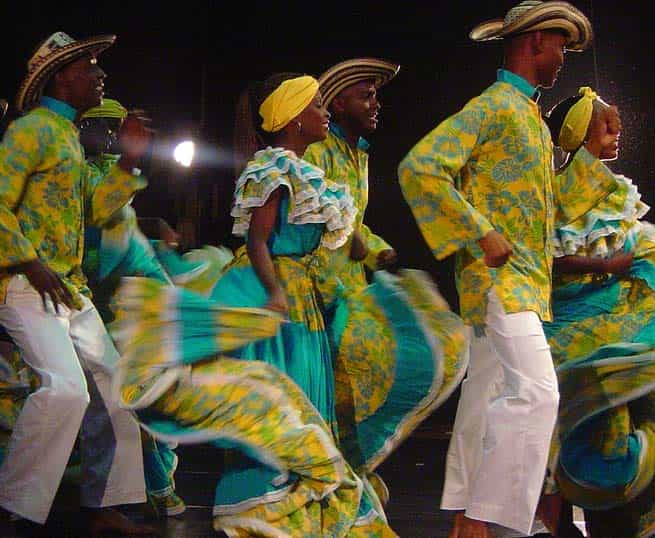
Northwestern / Antioquia
Across the central cordillera, to the west, we have Antioquia. Though in the same Andean region as Bogotá, the area surrounding Medellín took on a slightly different character. Without the draw of the capital city, it did not cultivate the same level of opportunities for settlers. Further, though it had an abundance of fertile land, the native population wasn’t really dense enough to facilitate easy exploitation by a large number of haciendas. There were, however, gold mines. In the absence of readily available, reliable indigenous labor (many would run away), wealthy colonizers turned to slavery. Enslaved people were brought from Caribbean plantations and Africa to work in often lethal conditions. Many, of course, also ran away to form free communities or palenques far away from white people. Still, gold mining remained grimly profitable.
Sensing opportunity, small farmers filtered into the region to displace its native population and take advantage of their productive lands. These peasants were often poor but with agriculture and small trade networks, they were able to maintain a degree of independence. Moreover, since their population was much bigger than those of the mine owners or the enslaved people, the image of the small, self-sufficient farmer came to symbolize the region.
Southwestern / Popayán
Farther south, between Andean foothills and the Pacific Ocean, are the lands situated around Popayán. The southwest blends aspects of the two areas above because it was home to a relatively dense native population and it had various gold mines. An array of affluent settlers therefore descended into the region to exploit native labor on haciendas and enslaved labor in mines.
As a result of the high proportion of prosperous colonizers, Popoyán took on aristocratic airs as a an “old money” stronghold, deeply rooted in a kind of feudalism. For a time, it even challenged Bogotá in influence. At the same time, and as a consequence of its extractive economics, it was also a center of indigenous resistance. It is, after all, located not far from La Gaitana’s homeland.
Northern / Caribbean
The Caribbean coast stands out as one of the areas where international trade was most possible and economical during the imperial period. As such, cities like Cartagena and Santa Marta became centers for imports and exports. A large navel base at Cartagena safeguarded trade and served as a strategic imperial outpost. The Spanish Inquisition also took up residence in the city, ostensibly to guard over the souls of the saved.
Neither state nor church, however, gave protection to the enslaved people trafficked through their city. Quite the opposite. With explicit spiritual and political blessings, around 1 million people entered the docks at Cartagena as enslaved captives before being sold to nearby cattle ranches or across the Americas to work in gold mines or on plantations. Along with the Pacific coast, the area around Cartagena today has the highest proportion of Afro-Colombians.
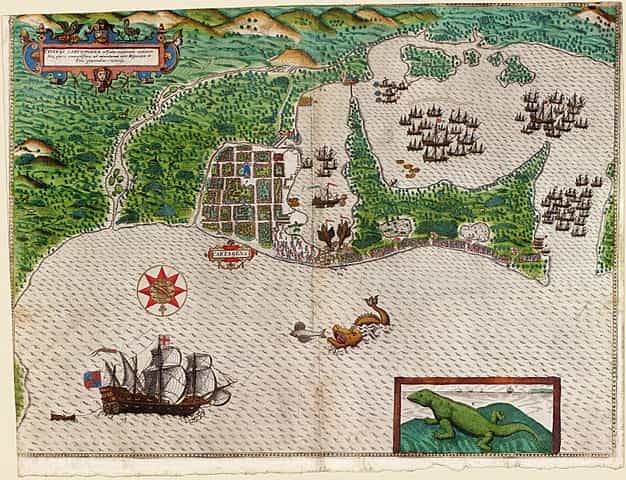
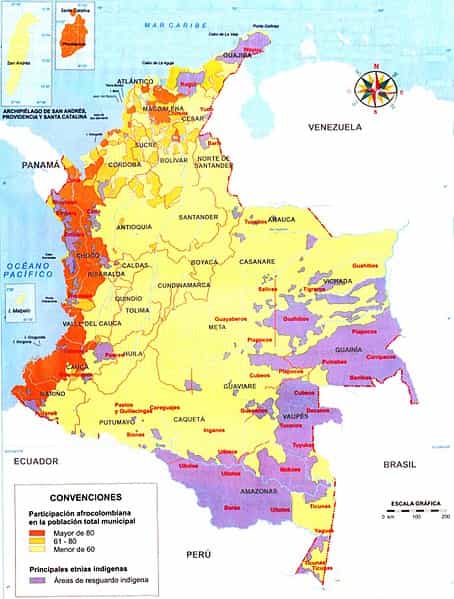
Eastern Llanos and Amazon Rainforest
Though biologically and geographically distinct, the eastern llanos (orinoquía) and Amazon Rainforest regions of Colombia were both similarly neglected by Spanish imperial forces. These tropical grasslands and forests presented an array of difficulties and were too sparsely populated for straightforward colonization. The lands were mostly left to surviving native groups and the few missionaries who ventured across the eastern cordillera to establish disconnected, autonomous religious communities.
Look at a modern map of Colombia and you will see that there are still few roads or population centers in the part of the country the unfurls east of the mountains. Despite this disconnection (or because of it) it has been, and continues to be, subjected to scattered exploitation by agribusinesses, mining corporations, and drug traffickers. Nevertheless, its relative isolation has also helped preserve its biological and cultural diversity. It is home to many national parks and to the majority of Colombia’s indigenous population, who often live on resguardos (protected reservations) that cover nearly two thirds of the rainforest and large chunks of the orinoquía. These areas continue to embody Colombia’s complex history, natural beauty, and cultural richness.
Conclusion
The empire was extended by means of death and destruction in a process that built new oppressive structures over the ruins. Imperial systems were outlined around the same ancient geographies and histories that had always played a role in determining the shape of communities. Furthermore, as La Gaitana reminds us, the past continues into the present, finding resonance in memories, monuments, and movements that cry out for liberation.
Sources
The Making of Modern Colombia: A Nation in Spite of Itself by David Bushnell
Magdalena: River of Dreams by Wade Davis
Various articles.
Note: All views expressed are my own, they do not represent the Fulbright or any other organization.